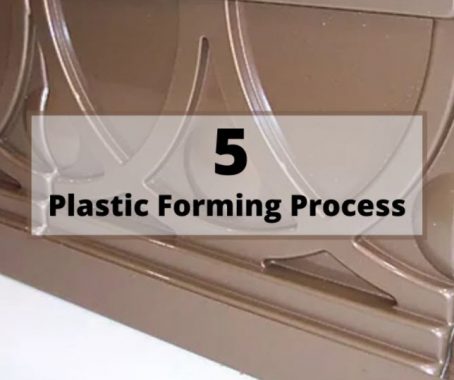Plastic products are made using a wide variety of plastic forming processes. There are 5 common techniques used to produce most of the items you see every day.
Plastic is a highly versatile material, both durable and disposable depending on the application. So with such a wide variety of products, how does plastic take on so many shapes?
It’s all about the heat.

Heat allows the plastic to soften and then take on the shape of a mold or form. Different techniques use gravity, vacuums, compression, centripetal force, etc. to push/pull the plastic into the mold. Here’s a simple breakdown of the most common practices:
Plastic granules are poured into a mold and spins in two different directions simultaneously while heat is applied. The plastic is forced outward to create a hollow molded piece. Once the mold is cooled, the piece is removed from the mold.
Products like containers, tanks, canoes, and playground slides are made using this technique.
Liquid plastic is injected into a mold to form a good portion of the plastic products you see every day. Mechanical parts, musical instruments, toys, kitchen utensils, furniture, etc. are all commonly injection molded. Generally, this process is used for products that are going to be produced in mass quantities.
This process is similar to rotational molding in that it produces a hollow molded piece. The difference is that rather than using centripetal force to push the plastic outward, air is used instead. This process is used to create bottles and containers.
In this case, plastic granules are heated and mechanically squeezed between two pieces of a mold until they take on the molded shape. Molds can be extremely complex and this process is generally for high volume productions. Things like your light switch covers and many automotive parts are made this way.
This process heats sheet plastic and then uses a vacuum to pull the plastic into the mold. Enclosures for MRIs and ATMs are made this way as well as tubs and various plastic covers. This process is used for lower volume production.
Wait, there’s more…
There are lots of options when it comes to vacuum forming plastics, including several variations on the processes we just listed. Plastic can also be CNC machined and line bent to achieve different shapes without a mold.
Looking for a more in-depth understanding of plastic forming services? Give us a call at 803-431-2256, we love to talk about this stuff